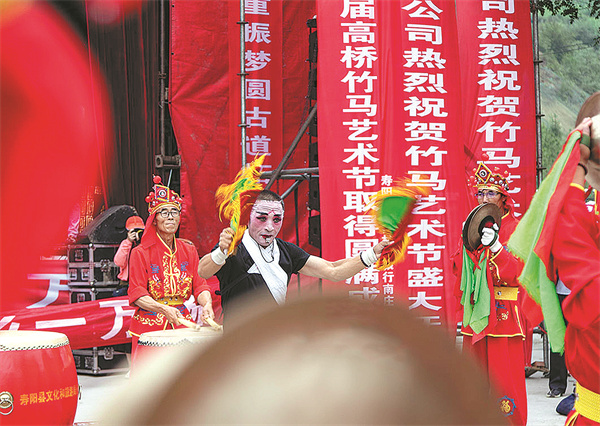

"The vivid presentation of those historical figures could bring the audience back to the long journey of the past," Guo says.
He worked as an accountant in Guojiagou after finishing middle school.
Since entering the 21st century, Guo says he has greatly appreciated the increasing emphasis put on the protection of intangible cultural heritage by local authorities.
Growing up in a family that has performed the bamboo horse show for five generations, Guo felt obliged to revive the traditional art.
He used his spare time to collect and study everything to do with the history of the bamboo horse show, to get down to its bare essentials and reveal its true essence.
Guo found that the show evolved from ancient exorcising dances featuring exaggerated facial masks, which were discarded during the Qing Dynasty (1644-1911), when the show started to focus on historical figures.
Performers chanted words and folk songs, while wearing their bamboo horse on their stilts to deliver scenes depicting combat.
"Our family is the only one that has carried on the show without stopping," Guo says.
"My father is pushing 80, but he can still get up on stilts and perform."
Inheritance of the bamboo horse drama was arduous.
In the 1930s, the Japanese invaders occupied Shouyang and forbade locals to host folk gatherings. The bamboo horse performance was forced to stop.